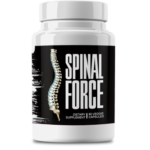This Village-Made Chinese Pain Reliever Eliminates Back And Joint Pain!
SI Joint Injury: When to See a Doctor

SI Joint Injury: When It's Time to Call the Doctor
That nagging pain in your lower back that shoots into your hips or legs? It might be more than just a simple ache - you could be dealing with an SI joint injury. This often-overlooked joint where your spine meets your pelvis is your body's natural shock absorber. When it's not happy, you'll definitely know. Let's break down what causes SI joint problems, how to spot them, and most importantly - when it's time to get professional help.
SI Joint Injury 101: What's Going On Back There?
The Lowdown on SI Joint Injuries
Your sacroiliac (SI) joint is like the sturdy bridge between your spine and pelvis. When this joint gets irritated, inflamed, or out of alignment, it can throw your whole lower body out of whack. The tricky part? SI joint pain often gets mistaken for regular back pain or even hip issues, which is why so many people struggle to get the right diagnosis.
Why Does My SI Joint Hurt?
SI joint pain doesn't just happen out of nowhere. Here are the usual suspects:
- Oops moments: That fall on the ice or fender bender last month? Could be the culprit.
- Pregnancy changes: Thanks to relaxin hormones, your pelvic ligaments loosen up - sometimes too much.
- Wear and tear: Arthritis can turn this smooth-working joint into a creaky door hinge.
- Overdoing it: Marathon runners and desk jockeys alike - both can stress the joint in different ways.
- One leg longer than the other: Your body's version of a wobbly table.
How to Know It's Your SI Joint
SI joint pain has some telltale signs:
- A deep ache in your lower back that moonlights in your butt cheek
- Pain that travels down your thigh but usually stops before the knee
- That "I've been sitting too long" stiffness when you stand up
- Stairs feeling like Mount Everest
- Your pelvis feeling about as stable as a Jenga tower
Red Flags: When to Call the Doc
When Pain Overstays Its Welcome
We all have those "I slept wrong" pains that fade in a few days. But if your SI joint pain is still hanging around after a couple weeks despite rest and OTC meds, it's time to ring up your doctor.
When Pain Starts Traveling
If your pain starts sending branches down your legs or your toes start tingling, that's your body's version of an alarm bell. Nerve irritation isn't something to tough out.
When Daily Life Gets Hard
Struggling to put on socks or dreading your commute because of the pain? That's your cue to get professional help before it limits your life even more.
Getting to the Bottom of Your Pain
The Doctor's Detective Work
Your doc will play detective - pressing on tender spots, moving your legs in specific ways (yes, that uncomfortable FABER test), and piecing together your pain story.
The Gold Standard Test
While X-rays and MRIs help rule out other issues, the real smoking gun is a diagnostic injection. If numbing the joint makes your pain vanish, bingo - we've found the problem.
Common Imposter Conditions
SI joint pain loves to disguise itself as:
- Slipped discs
- Sciatica
- Grumpy hip joints
- Piriformis muscle issues
This is why proper diagnosis matters - you can't fix what you haven't identified.
Fixing What Hurts
The Conservative Approach
Most SI joint issues respond well to:
- Physical therapy: Think of it as personal training for your pelvis
- Medications: NSAIDs to calm inflammation, muscle relaxants for those tension spasms
- SI belts: Like a supportive hug for your unstable joint
When You Need Extra Help
For stubborn cases, steroid injections can be game-changers, often providing months of relief when other treatments fall short.
The Last Resort
In rare cases where nothing else works, SI joint fusion surgery can stabilize things. The good news? Today's techniques are way less invasive than old-school surgeries.
Keeping Your SI Joint Happy
Prevention Exercises
Strong core and glutes = happy SI joint. Try these:
- Pelvic tilts (like a cat stretching its back)
- Bridges (butt lifts that would make a fitness influencer proud)
- Clamshells (no actual shells required)
- Bird dogs (because who doesn't want to pretend to be a pointer dog?)
Posture Matters
Your mom was right - stop slouching. And for heaven's sake, lift with your legs, not your back.
Know Your Limits
If running leaves you hobbling, maybe switch to swimming or cycling for a while. Your joints will thank you.
Living With SI Joint Pain
Home Comforts
Ice packs and heating pads become your new best friends. So do supportive chairs and strategic pillows.
Sleeping Smart
Side sleepers - put a pillow between your knees. Back sleepers - try one under your knees. Small changes, big relief.
Work Smarter
If your job aggravates your pain, talk to HR about ergonomic adjustments or consult a physical therapist for work-friendly modifications.
SI Joint FAQs
Will It Go Away on Its Own?
Maybe... if you're lucky. But why suffer waiting to find out?
How Long Does This Last?
Acute pain might tap out in weeks. Chronic cases? They'll overstay their welcome without proper treatment.
What If I Ignore It?
Chronic SI joint issues can lead to a domino effect - weird walking patterns, more falls, and other joints picking up the slack (and the pain).
Wrapping Up
The Bottom Line
SI joint pain doesn't have to run your life. With the right diagnosis and treatment, most people get back to doing what they love - pain-free.
Don't Tough It Out
If you're nodding along to these symptoms, make that appointment today. Your future self will thank you when you're moving comfortably again.








